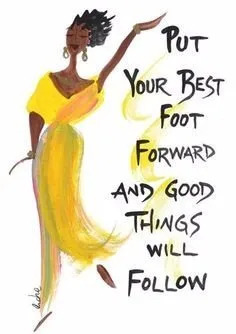
Tackling Workplace Anxiety

Most of us associate anxiety with danger or unwelcome events and circumstances. For some of us, a spike in our stress levels can be debilitating. Yet here’s the thing: workplace anxiety is as predictable as Monday Morning – it’s going to happen! While some level of anxiety is expected, severe anxiety can quickly develop and affect an employee’s workplace performance, relationships with co-workers and supervisors, and overall quality of work.
Melanie Benitez , our Client Success Manager, lined out ten of the most common sources for workplace anxiety last week, and we wanted to share a few of them with you today.
1. Lack of recognition
Behaviorally we all appreciate recognition – a lack of it can cause us to feel anxious possibly because without it we don’t know if we are doing the right thing. So as a reminder, behaviorally what do each of the behaviors need. High D – Wonder why everyone can’t do what they do. High E – will partake and share in why they did a good job. High P – modest but pleased about receiving praise. High C – Tends to downplay and will think “I could have done better”. Look and see how workplace morale changes when you spend more time acknowledging the “little victories.”
2.Workload deadlines
Understanding how your staff approach and what you as the manager/supervisor can do is a start. High D – start with the result – define the concept, no need to micromanage. High E – limit new ideas and keep them focused on the task/deadline at hand. High P. – enjoys having one task at a time – appreciates knowing the deadline expectation. High C – give them specifics about the job, how to complete it and what results are expected.
3.Constant interruptions
High D – will not appreciate being interrupted and will probably state so. High E – because High E’s like to communicate and enjoy having conversations, they will send to be ok with interruptions. In fact, it is best to avoid interrupting them as they can be easily distracted. High P – will stop and appear to be calm and ok with the interruption, however inside they may be stressing because they are thinking of everything else they need to get done. Pay attention to their body language. High C – with respect being huge to someone with high C, they may feel disrespected if interrupted constantly – can cause stress as well because interruptions could impact their ability to get things “right”.
4.Dealing with authority figures
For some, dealing with someone in a position of higher authority can be intimidating – stress or anxiety can occur with those with High D, if they feel their supervisor/manager is micromanaging them or if they feel. High E – may get nervous to approach manager/supervisor if they feel they won’t be listened to or feel they are not liked and or respected or feels they won’t get the friendly. High P. – may feel anxious or stressed if approached by manager with questions and is not given sufficient time to process the response. High C – same for them but reason for feeling anxious or stressed could be the result of feeling as if they cannot give the correct response. Regardless of the behavior or reason don’t hesitate to seek advice/ask questions from your boss, it does not show weakness but demonstrates wisdom – chances are your boss will be glad you asked and will be quite willing to share what they know with you and is probably not as “scary”.
5.Difficult coworkers
Understanding each other and appreciating each other’s behavioral strengths is key to resolving those that drive us crazy at work. Understanding and applying the appropriate communication to those you work with can help. And being able to say things like “wow, that was a bit harsh their High D or I know you need time to think about this but I need something by XXXX and give them a time frame. Or those high C’s – I know you have an answer to this however can we talk about a different way to think about this.
6.Lack of clear direction
High D individuals will automatically come to their own conclusion if not given enough direction – they won’t get stuck but if they don’t understand your vision, the direction they head may not be the one you want. High E. – if unsure of direction, may seek engagement and ideas from others – what this does is causes them to engage in conversations with others – taking time away from them and from completing the task at hand. High P – because of their need to process, they may need to circle back around and ask additional questions – must create an environment that makes it safe for them to do this. High C. – will get stuck and will not move forward if they do not feel they can do it accurately.

Learning more about yourself behaviorally, can give you an upper hand on any of these factors that stress you out. Learn to recognize the physical effects of stress and do something about it before it makes you ill. Beware of work stress spilling over into other areas of your life.
Whatever the source of your stress, speak to your manager or someone in your organization that you feel comfortable talking to. Employers have a duty to ensure the health, safety and welfare of their employees. You can help reduce workplace stress through a series of changes both in the office and at home. Try incorporating one or more stress-mitigating practices into your daily routine and you may find yourself happier at work and at home.
Don’t forget, we’re getting social- follow us on Facebook , Twitter and LinkedIn. Stay tuned for our next Wednesday Recap and learn more about leveraging behavior with our other blog posts . If you know of an organization or company that may be challenged with communication and could benefit from The Know Your Talents™ Team Impact! Workshop or PDP Professional Certification , please call us at 480-348-8900!


